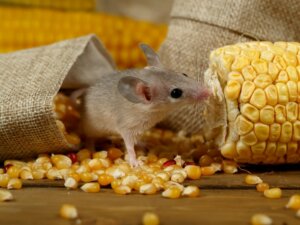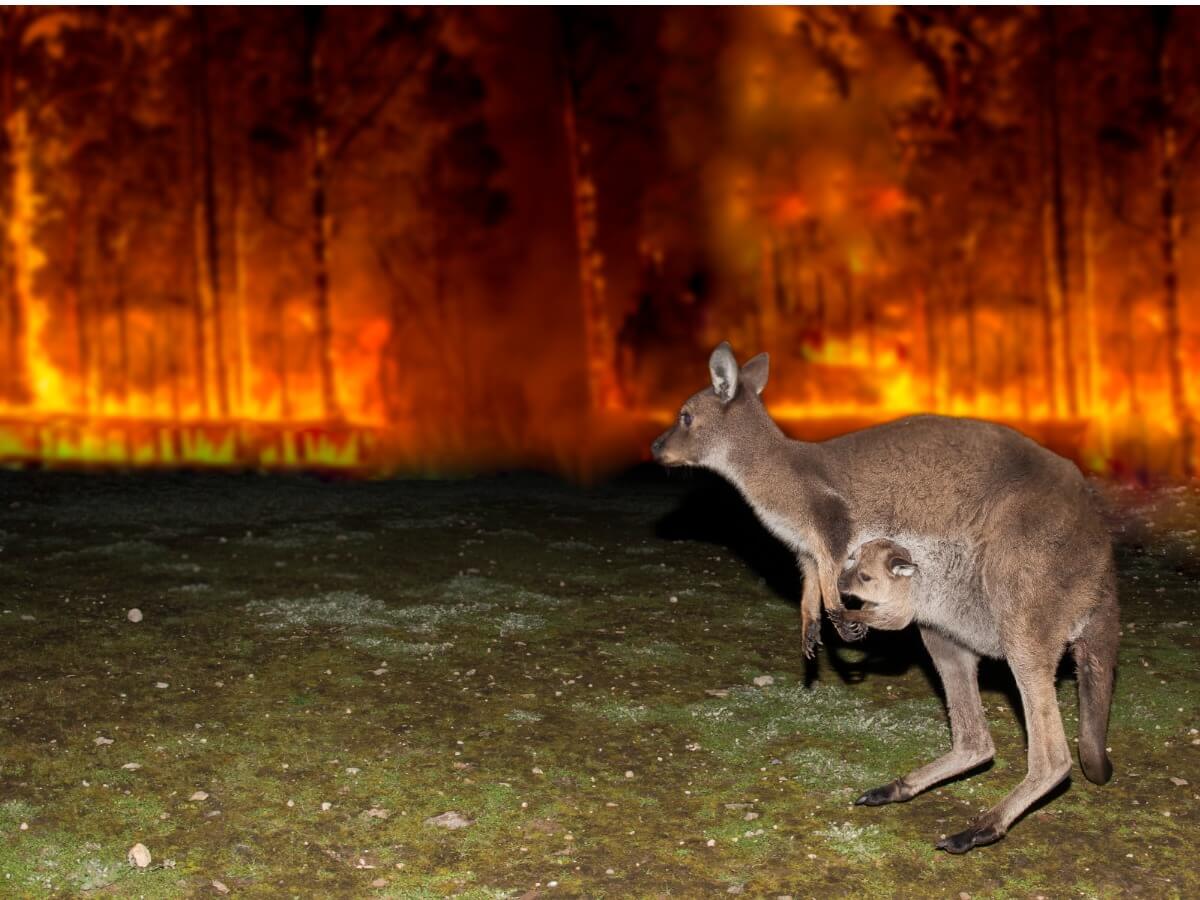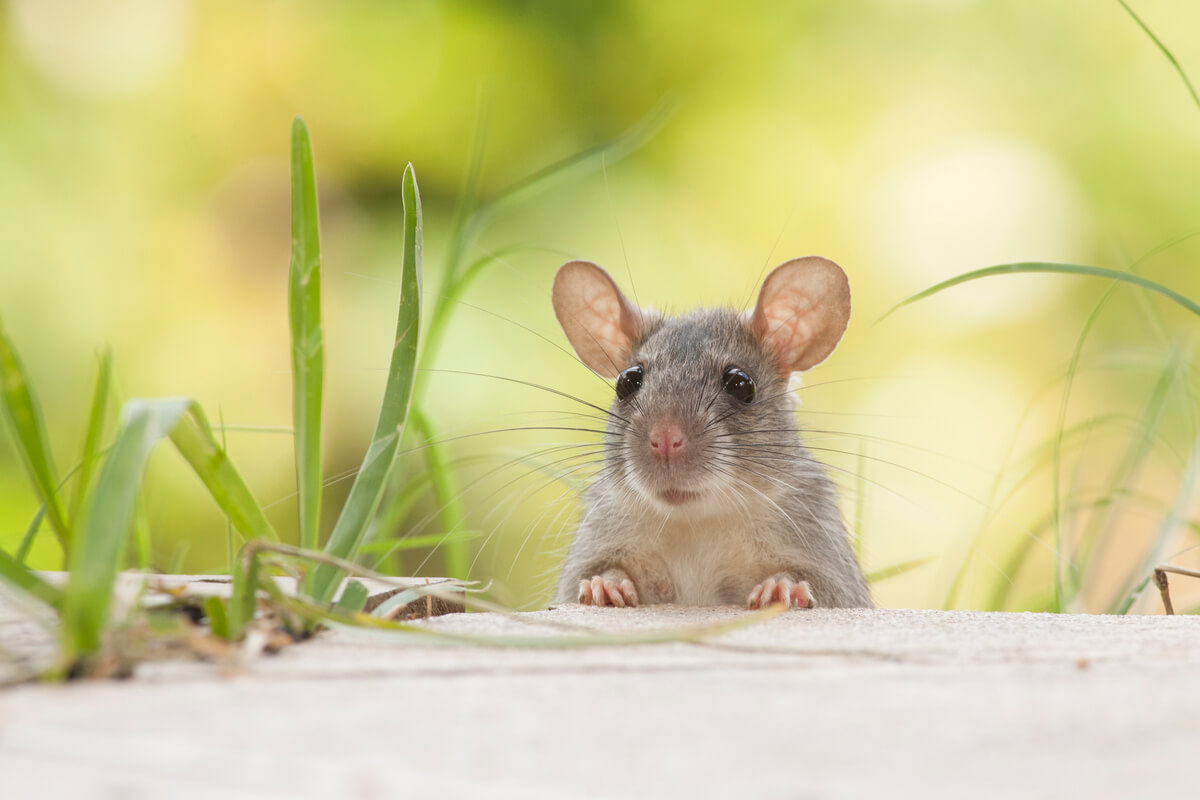4 Consequences of the Mouse Plague in Australia

Australia, with its incredible biodiversity and magnificent landscapes, has suffered a series of catastrophes in recent years that seriously threaten the balance of its ecosystems. The most recent one is a devastating mouse plague that is devastating everything in its path.
The Australian people have found it hard to understand, and we need to delve into the causes that have put the country in this critical situation. Like everything in nature, changes in the environment have often magnified things and set off a chain of consequences.
Australia: a series of catastrophic misfortunes
Australia is one of the most affected victims of global warming; the last 40 years have been the hottest in the history of this country. This persistence of high temperatures has favored droughts, which, in turn, led to the infamous fires.
Deserts cover 44% of Australia’s surface. Temperatures are warm most of the year – in winter they don’t usually drop below 18ºC (64 F) – and strong winds combine with the low rainfall to create the perfect environment for fires.
In Australia, the period between January and March is known as the “fire season”.
During the 2020 pandemic, images of firefighters pulling koalas out of burning forests went viral. The data from these fires is disheartening:
- 80,000 square kilometers have been devastated, mostly forests that were the last barrier to desertification. To give you an idea, this area is somewhat larger than the size of Ireland.
- More than 1 billion animals affected. As a result of this destruction of habitats, 327 species of animals and plants have become critically endangered, 244 of them endemic to the country.
- 400 megatons of CO2 emitted into the atmosphere. Smoke from the fires could be seen from Argentina and Chile. In satellite images, the fire could be seen raging across the country.
The rains after these fires, although they brought relief to the country’s fire agencies, also created major floods. The causes of this event are found in the fact that the entire land was devastated by the fire, as the protection against landslides provided by the vegetation had practically disappeared.

Rains and plague of mice
After recovering from fires and floods, the summer rains allowed the crop farms to finally flourish. However, this also created the ideal conditions for the mice (Mus musculus) to proliferate, which has led to the next catastrophe in Australia: a plague of mice that has been ravaging the fields.
Female mice can give birth to 8 to 12 babies per litter. This, together with the fact that their gestation lasts from 22 to 24 days, makes it possible for each mouse to raise about 300 individuals a year. Under favorable conditions and without predation, the reproductive rate of these animals translates into an exponential and inevitable growth in population.
Right now, the mouse plague is out of control. Experts say that, if the problem isn’t solved, rodents start to be seen in cities. With the arrival of winter, they would seek refuge there.
How does the mouse plague harm Australia?
Such a large number of animals doesn’t only have an impact on the crops that they devastate. The invasion of space in homes and farms also has consequences that must be considered. Here are some of the most important.
1. Food contamination
The presence of mice in food and grain stores poses a serious contamination problem, mainly by feces and urine, and even by corpses that can decompose hidden among the food. The accumulation of mouse bodies is a danger to public health.
2. The main consequence of the mouse plague: destroyed crops
Unsurprisingly, large masses of mice wipe out fields of grain and other food in their wake. Private orchards and farms are no exception, as several testimonies were published stating that these rodents had come to nibble the feet of chickens and other animals during the night.
3. Increase in cases of leptospirosis
This zoonotic disease, caused by the bacteria leptospira interrogans, is transmitted by the fecal-oral route when mice urinate on food or water deposits that humans later consume. Symptoms vary according to the severity of the disease, ranging from flu-like symptoms to kidney failure and pulmonary hemorrhage.
4. Problems in private homes due to the plague of mice
The impact on human homes by this infestation of mice is diverse. Blackouts have been documented due to gnawing of cables, people getting serious bites – even inside hospitals – and many individuals warn that the smell of the thousands of dead mice piled up is unbearable.

The measures taken so far to control the plague of mice – based around traps – are insufficient. On the other hand, the use of toxic baits is a danger to other animals, so their use is restricted for the time being. Forecasts say that this phenomenon could last up to 2 years.
This chain of catastrophes is a classic example of the consequences of climate change. Although Australia is already working on recovering everything they have lost, it’s the task of all humanity to prevent these misfortunes from being repeated in the rest of the globe.
Australia, with its incredible biodiversity and magnificent landscapes, has suffered a series of catastrophes in recent years that seriously threaten the balance of its ecosystems. The most recent one is a devastating mouse plague that is devastating everything in its path.
The Australian people have found it hard to understand, and we need to delve into the causes that have put the country in this critical situation. Like everything in nature, changes in the environment have often magnified things and set off a chain of consequences.
Australia: a series of catastrophic misfortunes
Australia is one of the most affected victims of global warming; the last 40 years have been the hottest in the history of this country. This persistence of high temperatures has favored droughts, which, in turn, led to the infamous fires.
Deserts cover 44% of Australia’s surface. Temperatures are warm most of the year – in winter they don’t usually drop below 18ºC (64 F) – and strong winds combine with the low rainfall to create the perfect environment for fires.
In Australia, the period between January and March is known as the “fire season”.
During the 2020 pandemic, images of firefighters pulling koalas out of burning forests went viral. The data from these fires is disheartening:
- 80,000 square kilometers have been devastated, mostly forests that were the last barrier to desertification. To give you an idea, this area is somewhat larger than the size of Ireland.
- More than 1 billion animals affected. As a result of this destruction of habitats, 327 species of animals and plants have become critically endangered, 244 of them endemic to the country.
- 400 megatons of CO2 emitted into the atmosphere. Smoke from the fires could be seen from Argentina and Chile. In satellite images, the fire could be seen raging across the country.
The rains after these fires, although they brought relief to the country’s fire agencies, also created major floods. The causes of this event are found in the fact that the entire land was devastated by the fire, as the protection against landslides provided by the vegetation had practically disappeared.

Rains and plague of mice
After recovering from fires and floods, the summer rains allowed the crop farms to finally flourish. However, this also created the ideal conditions for the mice (Mus musculus) to proliferate, which has led to the next catastrophe in Australia: a plague of mice that has been ravaging the fields.
Female mice can give birth to 8 to 12 babies per litter. This, together with the fact that their gestation lasts from 22 to 24 days, makes it possible for each mouse to raise about 300 individuals a year. Under favorable conditions and without predation, the reproductive rate of these animals translates into an exponential and inevitable growth in population.
Right now, the mouse plague is out of control. Experts say that, if the problem isn’t solved, rodents start to be seen in cities. With the arrival of winter, they would seek refuge there.
How does the mouse plague harm Australia?
Such a large number of animals doesn’t only have an impact on the crops that they devastate. The invasion of space in homes and farms also has consequences that must be considered. Here are some of the most important.
1. Food contamination
The presence of mice in food and grain stores poses a serious contamination problem, mainly by feces and urine, and even by corpses that can decompose hidden among the food. The accumulation of mouse bodies is a danger to public health.
2. The main consequence of the mouse plague: destroyed crops
Unsurprisingly, large masses of mice wipe out fields of grain and other food in their wake. Private orchards and farms are no exception, as several testimonies were published stating that these rodents had come to nibble the feet of chickens and other animals during the night.
3. Increase in cases of leptospirosis
This zoonotic disease, caused by the bacteria leptospira interrogans, is transmitted by the fecal-oral route when mice urinate on food or water deposits that humans later consume. Symptoms vary according to the severity of the disease, ranging from flu-like symptoms to kidney failure and pulmonary hemorrhage.
4. Problems in private homes due to the plague of mice
The impact on human homes by this infestation of mice is diverse. Blackouts have been documented due to gnawing of cables, people getting serious bites – even inside hospitals – and many individuals warn that the smell of the thousands of dead mice piled up is unbearable.

The measures taken so far to control the plague of mice – based around traps – are insufficient. On the other hand, the use of toxic baits is a danger to other animals, so their use is restricted for the time being. Forecasts say that this phenomenon could last up to 2 years.
This chain of catastrophes is a classic example of the consequences of climate change. Although Australia is already working on recovering everything they have lost, it’s the task of all humanity to prevent these misfortunes from being repeated in the rest of the globe.
All cited sources were thoroughly reviewed by our team to ensure their quality, reliability, currency, and validity. The bibliography of this article was considered reliable and of academic or scientific accuracy.
- Leptospirosis. (2021). OPS/OMS | Organización Panamericana de la Salud. https://www.paho.org/es/temas/leptospirosis
- Rodríguez, H. (2020, 13 enero). National Geographic. www.nationalgeographic.com.es. https://www.nationalgeographic.com.es/naturaleza/incendios-australia-numeros_15102
- Ratón casero (Mus musculus). (2021). Fundación Charles Darwin. https://www.darwinfoundation.org/es/datazone/checklist?species=5228
This text is provided for informational purposes only and does not replace consultation with a professional. If in doubt, consult your specialist.








